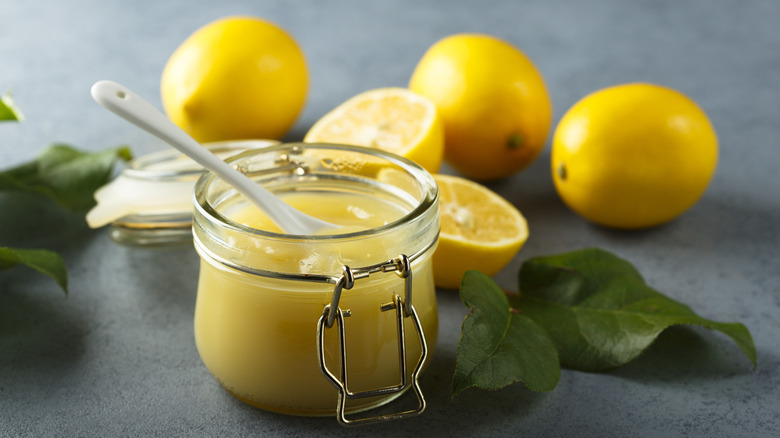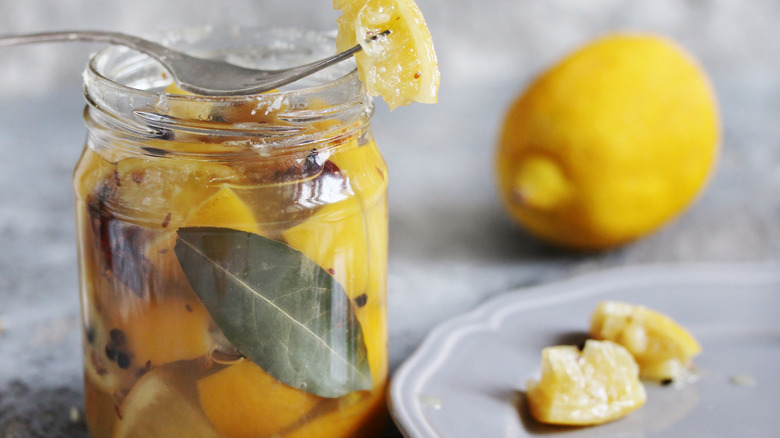What To Consider Before Using Preserved Lemons
When life hands you lemons and you can't use them up quick enough, you make homemade lemon preserves. What exactly are lemon preserves? Per MasterClass, they are essentially pickled lemons. Yes, even lemons can be pickled. The brine to preserve this fruit generally consists of salt, lemon juice, sugar, and spices that can range from black peppercorns to bay leaves, and even dried red chilies if you want to add a little kick to the tangy citrus. The final product is a softened fruit, where the preserved lemons' rinds take on a syrupy texture with an intense lemon flavor.
According to 177 Milk Street, these bright yellow preserved lemons are often used as a condiment. MasterClass concurs, noting a home cook can take those lemons and use them in salsa verde or chimichurri. This acidic element can also be used when making a cocktail or giving your vinaigrette a little extra punch.
If you've never thought about using preserved lemons in your recipes, now is the time. But if you are going to add preserved lemons to your culinary arsenal, there are a couple things you want to consider.
Don't use the pulp and peel together
According to 177 Milk Street, if you are going to be using preserved lemons in your cooking, and you definitely should, there are two parts of the fruit you need to consider, and that's the pulp and the rind. The cooking site cautions against using the two together because it creates a briny flavor and not necessarily in a good way. Instead, they suggest adding the peel to dishes where you can cook it. The peel has a strong flavor, so be sure to use sparingly. When using the pulp, 177 Milk Street recommends using it in pastes with foods that require long, slow cooks, noting the salty element of the pulp will really make your taste buds pop.
MasterClass shares that preserved lemons are wonderful when added to a mashed up avocado or can be a welcome addition in a hummus; However, if you are thinking about tossing out the brine, MasterClass says think again. The cooking experts recommend keeping it and using it in a Bloody Mary. Meanwhile, Martha Stewart notes you can add the liquid to some yogurt to perk-up the flavor and create a yummy dip.

